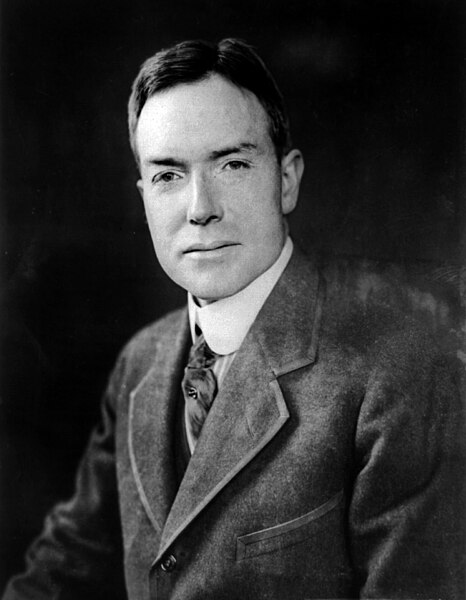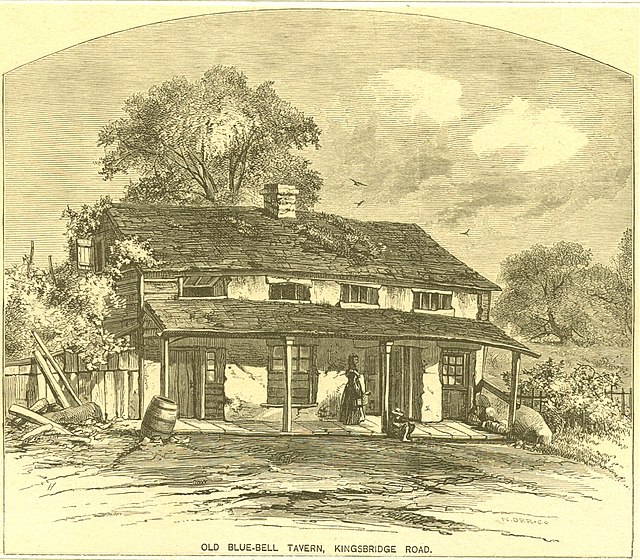The Cloisters, also known as the Met Cloisters, is a museum in the Washington Heights neighborhood of Upper Manhattan, New York City. The museum, situated in Fort Tryon Park, specializes in European medieval art and architecture, with a focus on the Romanesque and Gothic periods. Governed by the Metropolitan Museum of Art, it contains a large collection of medieval artworks shown in the architectural settings of French monasteries and abbeys. Its buildings are centered around four cloisters—the Cuxa, Saint-Guilhem, Bonnefont and Trie—that were acquired by American sculptor and art dealer George Grey Barnard in France before 1913, and moved to New York. Barnard's collection was bought for the museum by financier and philanthropist John D. Rockefeller Jr. Other major sources of objects were the collections of J. P. Morgan and Joseph Brummer.
View of the main entrance
George Barnard and Clare Sheridan at his cloister in New York City, 1921
John D. Rockefeller Jr. in 1920
Chalice, paten and straw, made of silver, gilded silver, niello and jewels. Münstertal, Black Forest, Germany, c. 1230–50. From the collection of Joseph Brummer
Washington Heights, Manhattan
Washington Heights is a neighborhood in the northern part of the borough of Manhattan in New York City. It is named for Fort Washington, a fortification constructed at the highest natural point on Manhattan by Continental Army troops to defend the area from the British forces during the American Revolutionary War. Washington Heights is bordered by Inwood to the north along Dyckman Street, by Harlem to the south along 155th Street, by the Harlem River and Coogan's Bluff to the east, and by the Hudson River to the west.
The George Washington Bridge, the world's busiest motor vehicle bridge, crossing the Hudson River with Washington Heights in the background (April 1986)
Blue Bell Tavern on Broadway
Paterno Castle
A 1910 photograph of The Riviera at 156th Street and Riverside Drive








